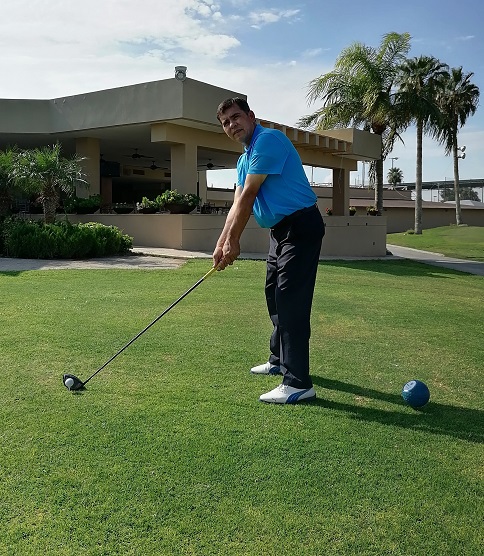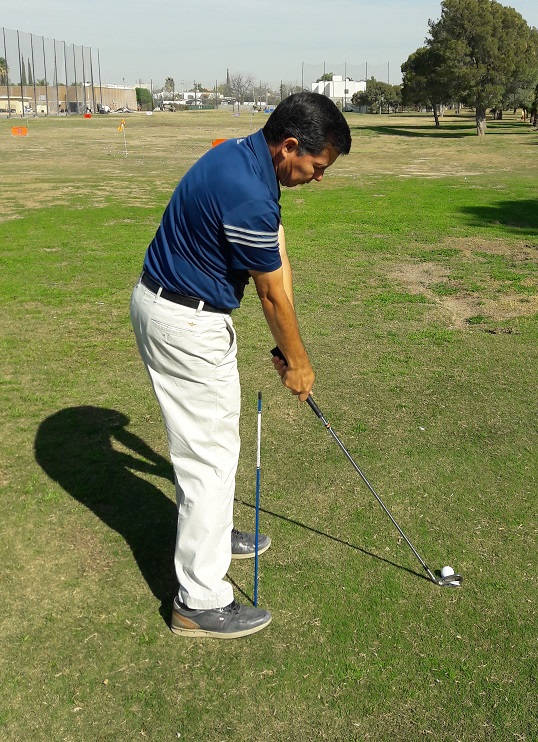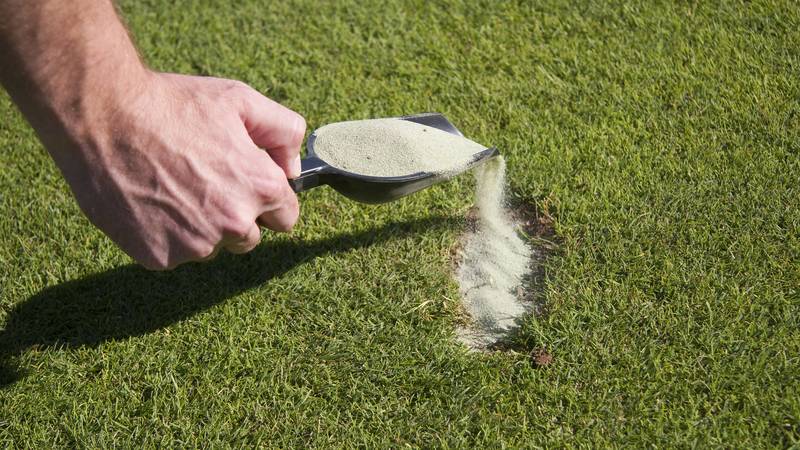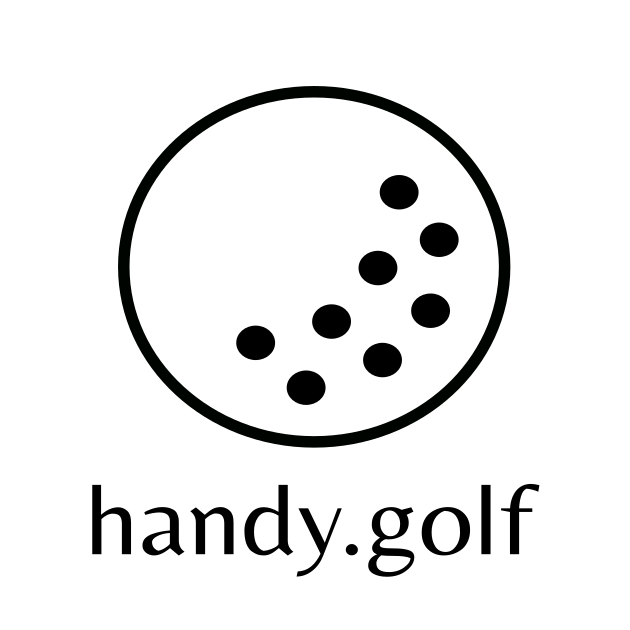
Talking in the 19th Hole
DRIVER. All players get a little nervous on the first tee shot. The truth is that feeling anxious is expected, so you don’t have to be ashamed if it happens to you. It’s part of this game. The first shot is one of the most crucial of the round, so you have to be well prepared to do it.
On the first tee shot:
– You may be more distracted because your hands are shaking, your mouth is dry, or you can feel your heart pounding, so you forget to focus on your pre-shot routine.
– You think everyone is looking at you, which scares you and makes you insecure.
– You are concerned about the evaluation that others will make of your swing and your stroke. What makes you uncomfortable and affects your attention.
– The lack of attention is magnified because you have in your mind what others may think about you.
– You put too much energy into what others may think of you, so the swing is affected.
The truth is that:
– People around the teeing area haven’t spent the whole day waiting to see your first shot, contrary to what your nerves might be telling you.
– It does not mean that they are there to see you specifically; they are there because it is where all the rounds begin.
– These people do not care what you do or stop doing when you are in the teeing area.
– These people will not remember you after you are gone. They won’t talk about you even if you fail.
– Some of those who are watching are players who are just waiting for your group to come out so they can do it.
– One-shot does not make a round. The tee shot counts in the score the same as a gimmie onefoot putt. You have misplayed after a good tee shot on the first hole, and vice versa, you played well after a poor tee shot. So, it is not true that the first hit sets the stage for the entire round. And if the first shot is terrible, it must be remembered that few things are more satisfying in golf than saving par after a bad tee shot drive.
– You have a lot of time to distract your attention and tend to give the first shot more importance than it deserves.

Some strategies to get an excellent first tee shot:
– Don’t try to hit the ball too far. There is a later time and more holes in the round to hit the ball hard.
– Apply your breath to dissipate tension.
– Forget the gallery and the thoughts you think they have. What matters is you and your routine.
– The pre-shot routine keeps you stable in these difficult times. It is vital to keep the routine the same. Getting into the routine should remind you that this is the same shot you’ve done hundreds of times.
– To get results, you don’t have to focus on them. The important thing in the tee shot is not the result. It is the commitment to do the routine.
– Keep the focus on the execution of the shot.
– Separate yourself from everything around you.
– You have the power to control the situation. You should not give the power to others, just because they are watching you.
– Shot into the sea from a cliff. Imagine you are hitting near the edge of a cliff that faces the ocean. The only objective is to make solid contact with the ball so that it flies off the cliff. This image eliminates concerns about distance and direction. Many players get into trouble when they try to guide the ball down the line instead of swinging freely. If you make solid contact with the ball, it will most likely come out straight.
– Visually remember a good driver you had on a tee shot on the first hole.
Applying these strategies will increase the effectiveness of your first tee shots. Once you get out of the first teeing area safely, it will give you a feeling of comfort and build your confidence.
IRONS. Since its inception, the teaching of golf has likely used images, accessories, and exercises to convey to the players how to execute a stroke. Some of the classic examples are:
– Imagine or make the takeaway with a bucket of water, without spilling water while doing it.
– Make swings by cutting tall grass with a scythe or grass whip.
– Take swings by cutting tall grass with a regular club.
– Make swings by hitting beans.
Today the sale of training aids is an essential part of the golf industry. On the internet, we can find dozens of training aids. Some of them very useful, others not so much. The advertising related to these accessories is attractive because they offer to improve your game in different aspects.
I have used many training aids, some from manufacturers and some from home. Based on my experience, I consider that:
– Training aids are usually expensive because of the market to which they are directed and not high consumption and turnover products.
– Training aids are awkward to wear. Most students prefer not to use them. Proof of this is that it is rare to see a player using one on the driving range.
– Wearing the training aid tends to distract the mind, interfere with natural movement, and create anxiety, so the player prefers not to wear them.
– The training aid is usually a novelty for a few days, but both the player and the student abandon it in two weeks.
– The player expects the benefits of the training aid now, and since it is not like that, he stops using it.
– Just as a medicine is for a particular disease, each training aid is for a specific technical failure. The player needs to buy and use the training aid that corresponds to the point to improve his swing.
– The training aids must be worn long enough to pass the period of discomfort and achieve the demand level that the accessory requires. Until then, you will get the benefits that the training aid offers.
Among my favorite training aids for their low price, their versatility and benefits are:
The stick. The stick is probably the accessory that has the most uses. Among them to:
– The alignment on the putt and on the full swing.
– The position of the ball.
– The path of the clubhead and putter.
– The plane.
– Monitor the movement of the legs.
– Monitor the movement of the feet.
– Stabilize your feet on the ground.
– The position of the hands-on impact.

A plastic bottle. The bottle also has multiple uses as the stick. My favorites are those related to the clubhead’s path through impact and to monitor the movement of the feet.
A # 4 soccer ball or a volleyball ball. A ball for me is like aspirin. With a ball, you can improve many of the technical errors. Among my preferred uses are:
– Place the ball between the legs to teach its correct movement.
– Make ½ swing for the extension of the arms.
– Throw the ball at a person or a wall to teach the correct sequence.
– Take full swings to teach twist, hand position on impact, and release.
– Put the ball next to the ball to improve the path of the clubhead.
My recommendation is to select a training aid for your putting, chipping/pitching, bunker shot, and full swing, and use them frequently.
PUTTS. Some clubs have the good practice of having caddies serve on the golf course. In this job called talacha, chore or service, caddies do the following activities:
– Fill divots in the starting areas and on the fairways.
– Repair ball marks on greens.
– Clean yardage markers in teeing areas.
– Sweep leaves from roads and other areas.
– Remove herbs in fairways.

The greenkeeper may request support from the golf professional for caddies to do other activities as required. For the program to work, it is essential to define its operation; this includes:
– Define the activities to be carried out.
– Provide the equipment and materials to carry out the activity.
– Determine the weekly service hours each caddy will provide, usually one to two hours.
– Assign a hole to a caddy or group of caddies. Only certain areas of each hole can also be assigned.
– Determine who will supervise the work of the caddies. Usually, it should be done by the Marshal, but so can a pro assistant.
– Keep track of the hours of service and the activity carried out.
For the service provided by the caddies to be a win-win negotiation, the Club must support the caddies. Among the initiatives we have seen are:
– Allow caddies to play golf on a specific day of the week.
– Support top-performing caddies to attend national caddies’ tournaments.
– The support can be with classes, play two days a week, pay them the tournament’s expenses, and project them so that they become professionals.
– Give a monthly cash recognition to the caddy who has done his best service in the golf course.
The golf professional must be the most interested in that his caddies are happy with his work at the Club because if the caddy is happy, they will indeed talk to the players. On the contrary, if the professional is not interested in their caddies’ well-being, they will be the first to give negative references to the players. And when caddies and players do not well regard a professional, his days are numbered in that Club. FORE.
